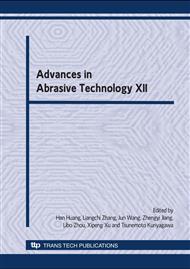p.440
p.445
p.451
p.459
p.465
p.471
p.479
p.485
p.491
Abrasive Surfaces Measured by Digital Optical Stereopsis
Abstract:
The principle of stereopsis involves measuring an object’s geometry from a pair of images taken at slightly different viewing positions. This technique is frequently used for geographical mapping in satellite-based reconnaissance, however, the same practice has not been reliably applied at the other end of the scale spectrum: i.e. optical microscope imaging. The impediments have been identified and addressed in this work, concluding that optical stereopsis can be applied to microscopical surface examinations, and that the resulting digital elevation models can be of particular use in tribological investigations for performance and failure analysis.
Info:
Periodical:
Pages:
465-470
Citation:
Online since:
June 2009
Authors:
Keywords:
Price:
Сopyright:
© 2009 Trans Tech Publications Ltd. All Rights Reserved
Share:
Citation:


